Abstract
The effects of mu and kappa-opiate receptor agonists were studied in a variety of tests in the mouse designed to correspond to clinical side-effects in man. These included sedation, decrease in pupil diameter, Straub tail, decrease in body temperature, decrease in respiratory rate and inhibition of gut propulsion. The mu-receptor agonists tested produced opiate side-effects in the mouse at doses between 2.4 and 34 times higher than their antinociceptive doses in the abdominal constriction test. Their ranked orders of potency in producing these effects were very similar to their order of antinociceptive potency. In contrast, the kappa-receptor agonists only produced opiate side-effects at doses between 29 and greater than 2500 times higher than their antinociceptive doses. There was no correlation between the potency ratios in these tests and in the abdominal constriction test. It is concluded that mu-receptor agonists may produce both their antinociceptive effects and opiate side-effects by interacting with the mu-receptor. The kappa-receptor agonists have previously been shown to produce antinociception via the kappa-receptor, but the opiate-like side-effects which appear with some of the drugs at much higher doses are probably due either to interaction with the mu-receptor or to some other non-specific action.
Full text
PDF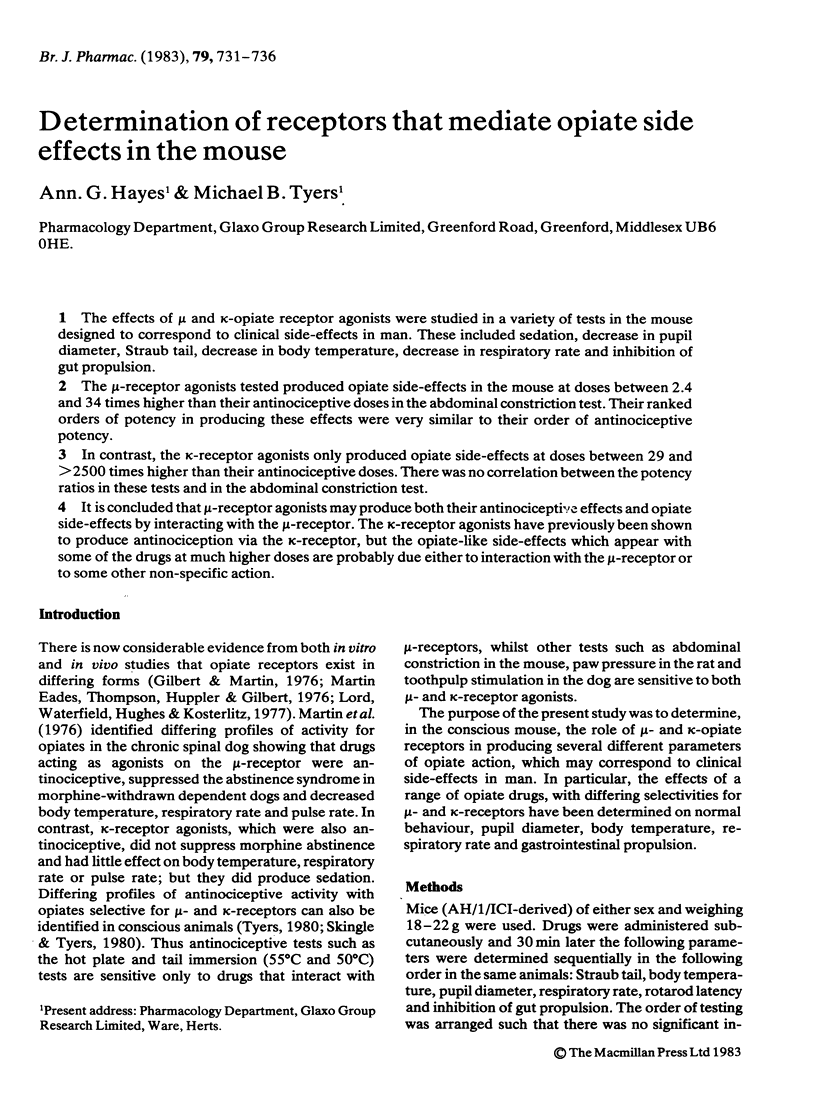
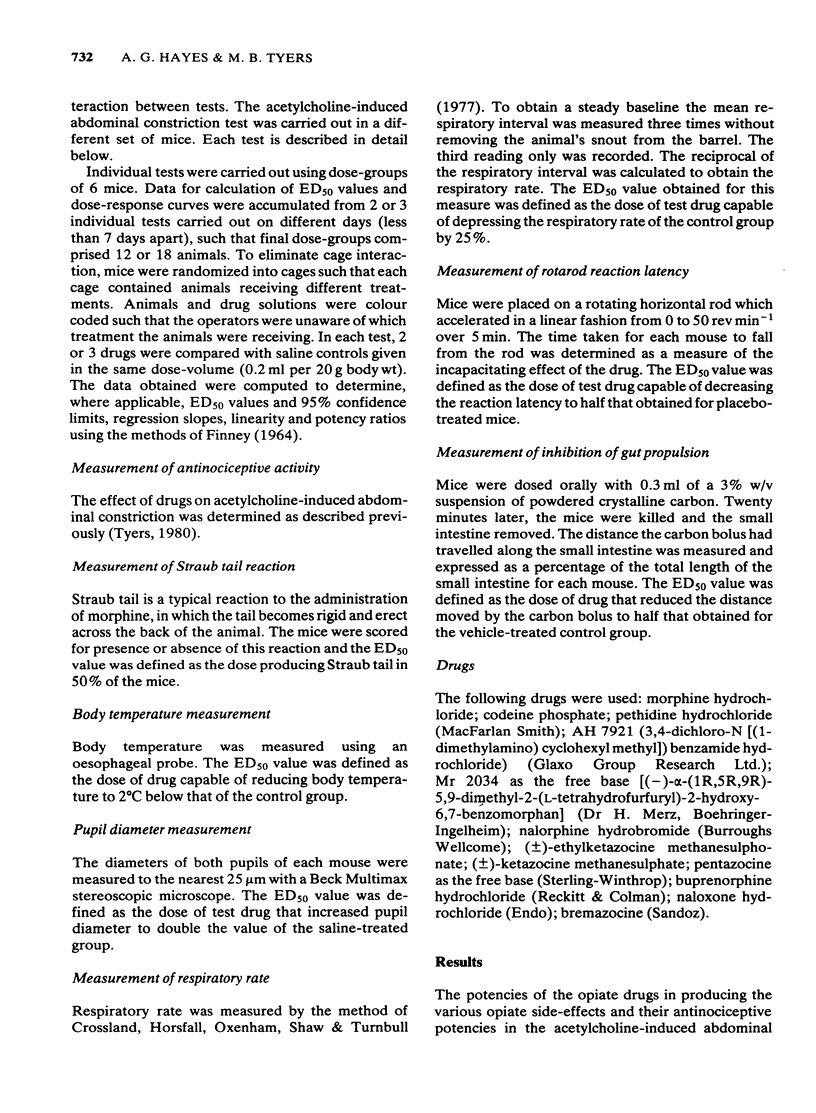
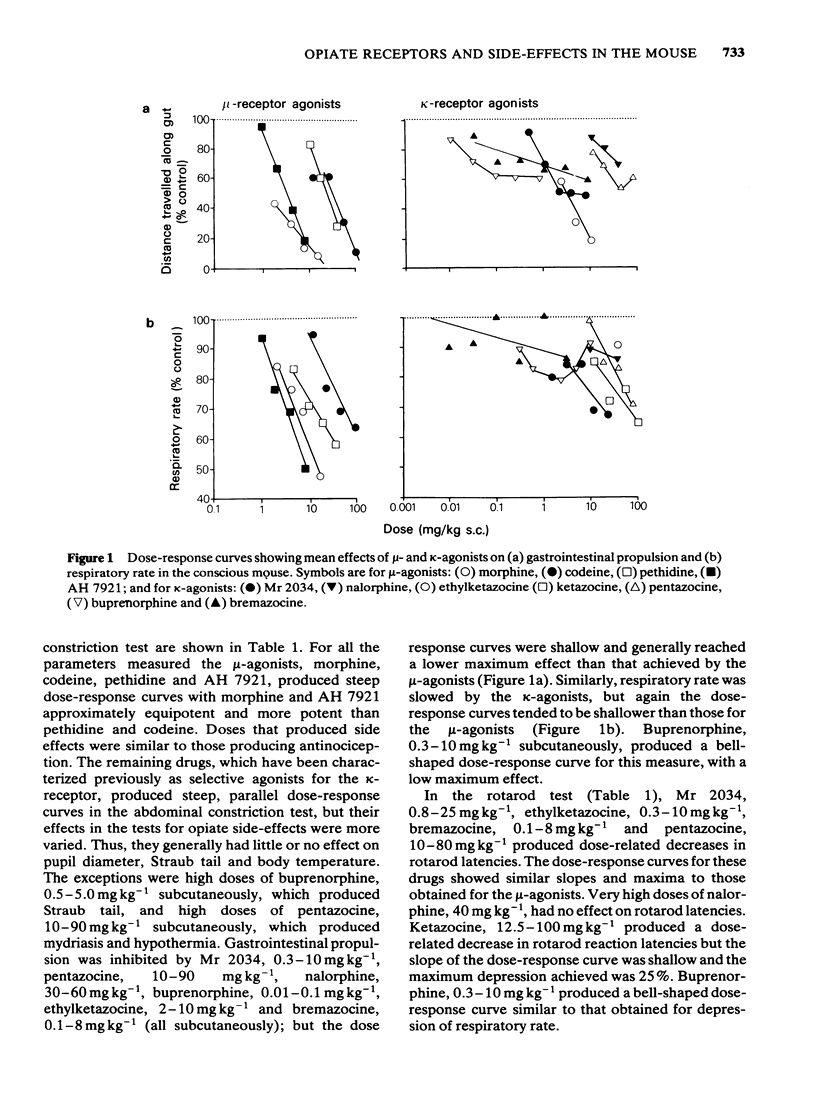
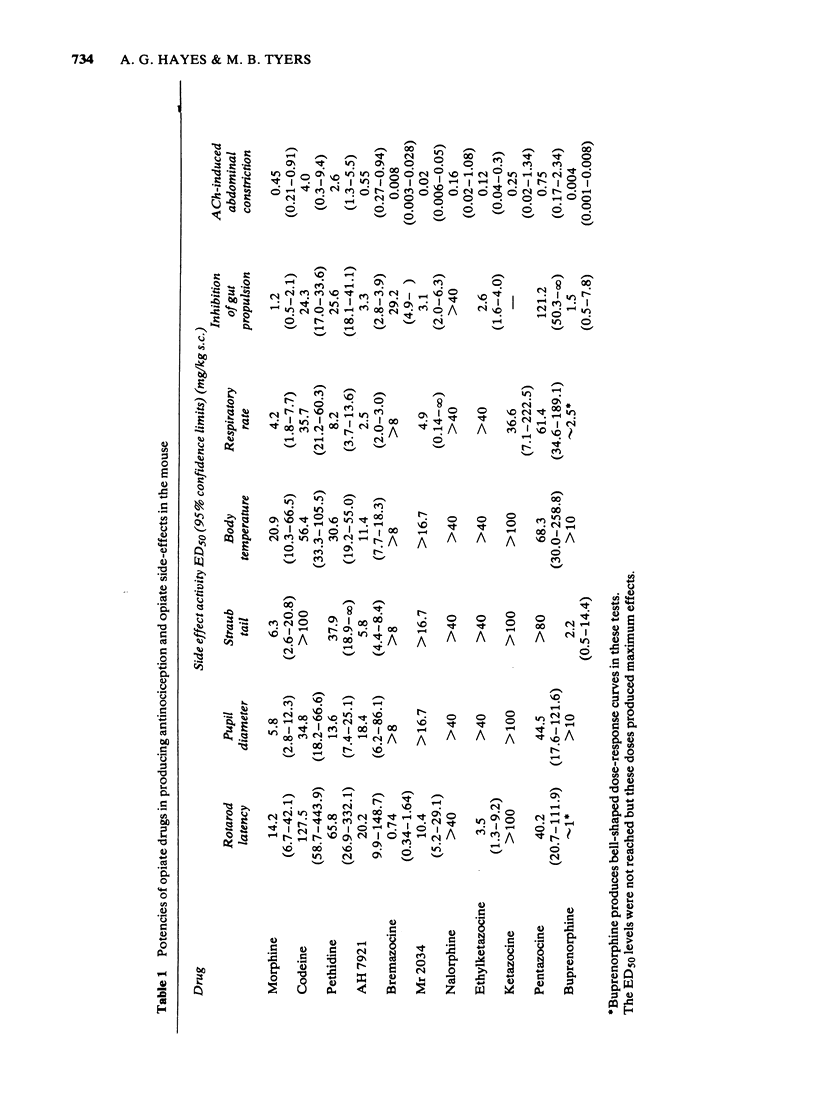
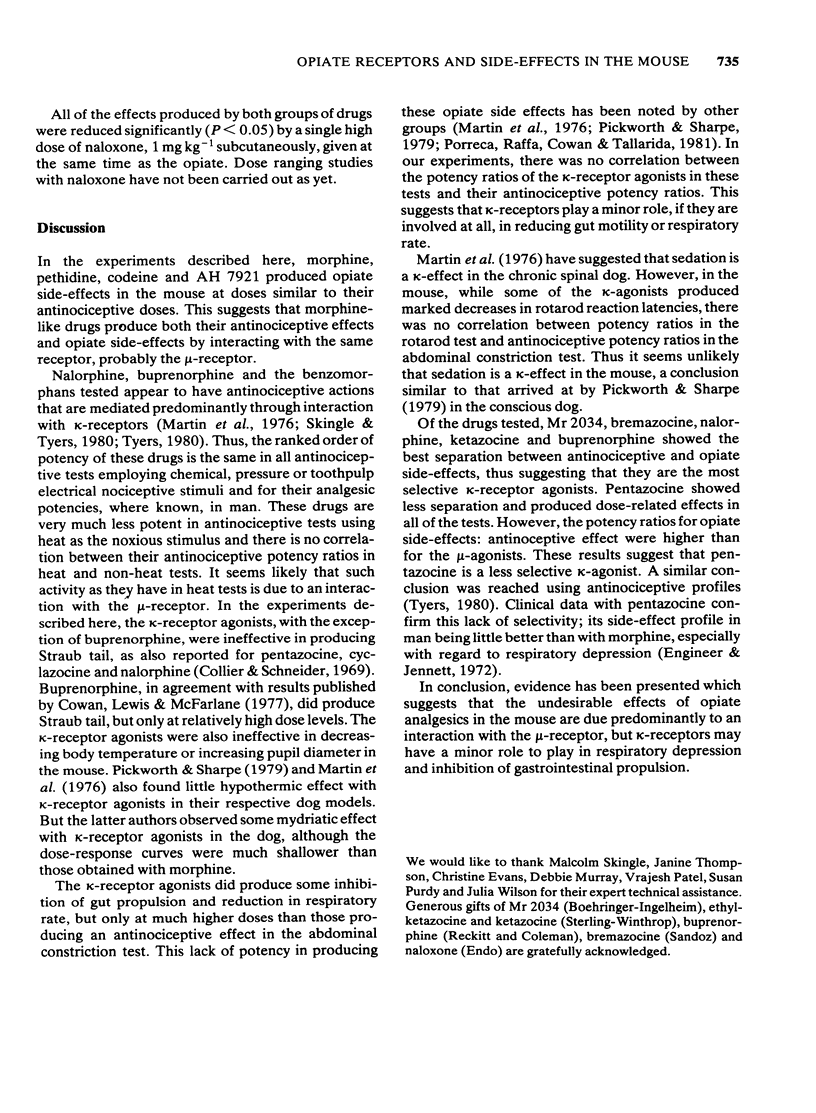
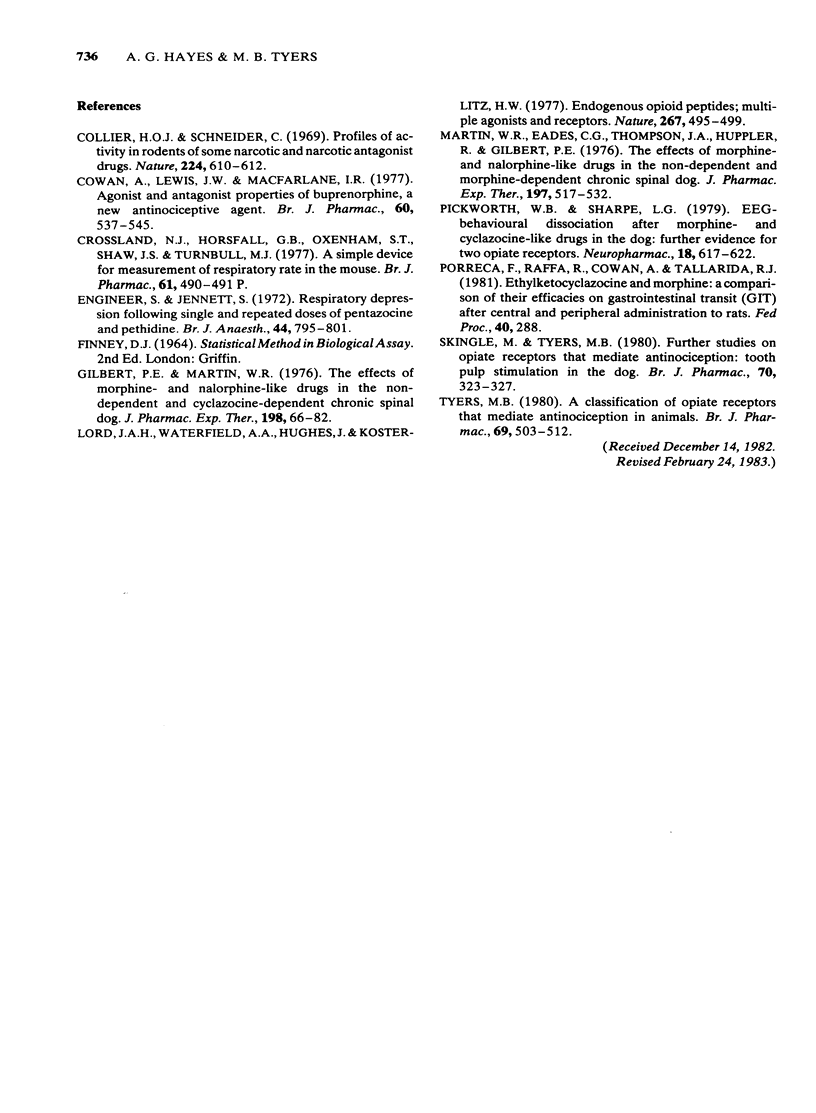
Selected References
These references are in PubMed. This may not be the complete list of references from this article.
- Collier H. O., Schneider C. Profiles of activity in rodents of some narcotic and narcotic antagonists drugs. Nature. 1969 Nov 8;224(5219):610–612. doi: 10.1038/224610a0. [DOI] [PubMed] [Google Scholar]
- Cowan A., Lewis J. W., Macfarlane I. R. Agonist and antagonist properties of buprenorphine, a new antinociceptive agent. Br J Pharmacol. 1977 Aug;60(4):537–545. doi: 10.1111/j.1476-5381.1977.tb07532.x. [DOI] [PMC free article] [PubMed] [Google Scholar]
- Engineer S., Jennett S. Respiratory depression following single and repeated doses of pentazocine and pethidine. Br J Anaesth. 1972 Aug;44(8):795–802. doi: 10.1093/bja/44.8.795. [DOI] [PubMed] [Google Scholar]
- Gilbert P. E., Martin W. R. The effects of morphine and nalorphine-like drugs in the nondependent, morphine-dependent and cyclazocine-dependent chronic spinal dog. J Pharmacol Exp Ther. 1976 Jul;198(1):66–82. [PubMed] [Google Scholar]
- Lord J. A., Waterfield A. A., Hughes J., Kosterlitz H. W. Endogenous opioid peptides: multiple agonists and receptors. Nature. 1977 Jun 9;267(5611):495–499. doi: 10.1038/267495a0. [DOI] [PubMed] [Google Scholar]
- Martin W. R., Eades C. G., Thompson J. A., Huppler R. E., Gilbert P. E. The effects of morphine- and nalorphine- like drugs in the nondependent and morphine-dependent chronic spinal dog. J Pharmacol Exp Ther. 1976 Jun;197(3):517–532. [PubMed] [Google Scholar]
- Pickworth W. B., Sharpe L. G. EEG-behavioral dissociation after morphine-and cyclazocine-like drugs in the dog: further evidence for two opiate receptors. Neuropharmacology. 1979 Jul;18(7):617–622. doi: 10.1016/0028-3908(79)90114-x. [DOI] [PubMed] [Google Scholar]
- Skingle M., Tyers M. B. Further studies on opiate receptors that mediate antinoception: tooth pulp stimulation in the dog. Br J Pharmacol. 1980 Oct;70(2):323–327. doi: 10.1111/j.1476-5381.1980.tb07939.x. [DOI] [PMC free article] [PubMed] [Google Scholar]
- Tyers M. B. A classification of opiate receptors that mediate antinociception in animals. Br J Pharmacol. 1980 Jul;69(3):503–512. doi: 10.1111/j.1476-5381.1980.tb07041.x. [DOI] [PMC free article] [PubMed] [Google Scholar]


